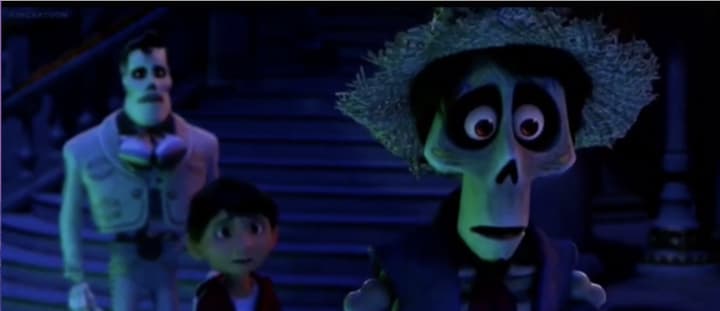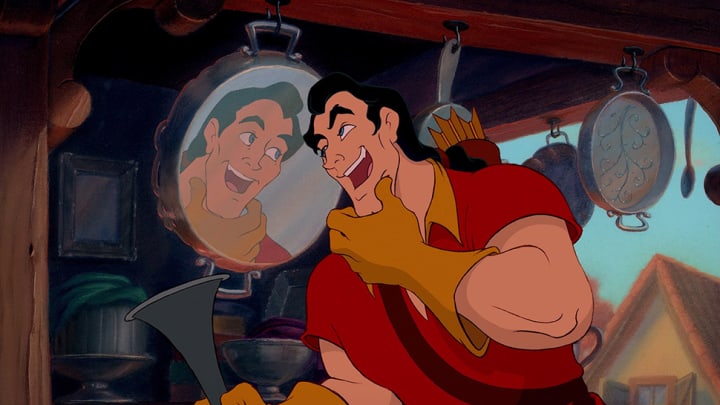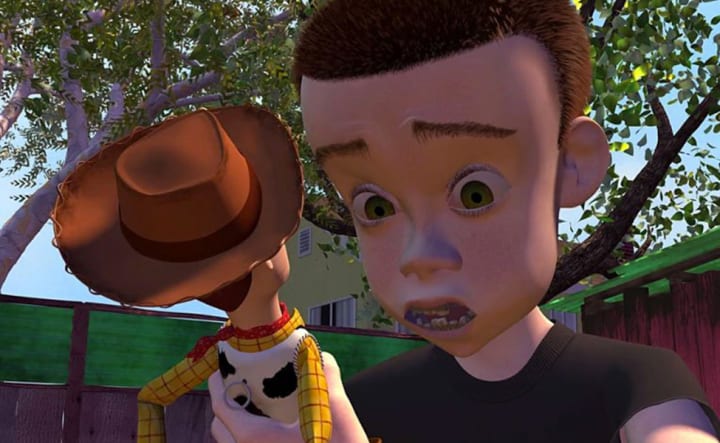Are Villains Always Necessary?
A good villain can improve a project, but that doesn't mean they are completely needed to make a good project.

After putting it off for too long, I finally found time in my schedule to sit down and watch Coco on Netflix. This was not only the winner of the 2018 academy award for Best Animated Feature, but also the award for Best Original Song, so I was excited to see what I was missing.
When it ended, I thought it was good, just good—and that kind of disappointed me a bit. It certainly wasn't bad or anything, it had an energetic story, and beautiful animation, and "good" characters.
I put good in quotations because I found the villain of the picture to be very one-dimensional, predictable and fairly forgettable. So forgettable that I had to Google his name in order to remember it for this essay.
The plot of Coco follows a young boy, Miguel, who longs to be a musician despite his family's hatred of music, after his great great grandfather seemingly abandoned his family to be a musician himself. Through careful deduction skills, Miguel comes to the conclusion that the legendary deceased musician, Ernesto de la Cruz, is his great, great grandfather and goes to the Land of Dead to meet him.

Along the way, he meets a man named Hector, who has been trying to return to the living world to see his family, and claims that he was Ernesto's partner back in the day. This leads to the two striking a deal that if Hector gets Miguel an introduction to Ernesto, Miguel will return to the living world to put up his picture so his family will remember him.
After a bunch of events, the two end up meeting Ernesto and the truth is revealed. Hector wanted to return to his family, leaving behind his glamorous life. Ernesto couldn't leave this life behind, and couldn't go on without Hector's gift in songwriting, so he killed him and passed his work off as his own.

Hector Learns the Truth About Ernesto de la Cruz
When I first watched this, I thought to myself that was a fine twist, and decent motivation for the character. Not that I was too surprise in Ernesto de la Cruz becoming the villain but, with what they decided to do, I thought it was fine.
But then I thought about it more and more after the movie ended, and I realized that I couldn't connect with Ernesto on a humane level. Sure, we all have our breaking points and have that moment of doing anything to succeed in life, but killing a best friend is a bit over the edge.
Wouldn't it have been better if the character's motivations were exactly the same but he didn't kill Hector. Hector died through an accident or other unstoppable tragedy and Ernesto, left without his better half in his act, steals his best friend's work to continue doing what he loves.
Not only would that give the character an extra layer of humanity, but also give the audience something more humane to connect us to Ernesto's character. That way, we can see him as a bad person, but understand the reasons he did them, like he had no choice but to resort to doing these things because his life, as he knew it, would have been over.
This would've also added a new dimension in the movie towards Ernesto and Hector's relationship. Ernesto seeing Hector as someone better than him in every way, but still a best friend and Hector seeing Ernesto as a man he once called friend, but now a thief and liar, not knowing if he can be forgiven.
To me, that would have been lightyears more interesting than making Ernesto a full-out villainous murderer.
This is also a problem I found when watching Zootopia.

Officer Judy Hopps and con man Nick Wilde team up to solve a conspiracy.
This film follows the ambitious Judy Hopps, who becomes the first bunny cop in Zootopia, and Nick Wilde, a con man, teaming up to uncover a conspiracy surrounding the disappearances of "predators" in the area.
Predators being the name used for animals in Zootopia who are known to eat meat, but don't follow their bloodlust nature due to the civilized society they live in. After some investigating, it's revealed that some predators are returning to this violent nature and attacking other animals and it's not very clear why.
Soon, citizens of Zootopia start treating predators differently, by avoiding them on public transit, talking about them behind their backs, etc.The film obviously wants to shine a light on racial profiling through it's clever message of using predators to portray minorities, which is a brave subject to tackle in a children's movie.

'Zootopia's' Commentary on Racial-profiling
However, I still felt that this could have been in done in a more interesting way. At the end of the movie, it's revealed that Bellweather, the mayor's timid little sheep assistant, was the mastermind behind the whole conspiracy, using a special berry that causes predators to go berserk.
While this does wrap up a nice happy ending for the kids, I felt that the message was hurt with this twist. Racism, in itself, can be considered a villain, because there are so many different layers to it.
There are the obvious racists out there that treat and speak to others differently simply because of the colour of their skin, but what about the other types of racism.
The people who don't mean to be racist but let the media and entertainment industry warp their perception of what someone from a certain country acts like. The racism that is fueled by the area you grew up in, the people you hang around with, the TV you watch and so much more.
It would have been way more interesting if the movie had explored these avenues more, instead of putting the blame on one singular character. Granted, the twist does make sense in connection to the rest of the mystery the film was setting up, and it was still entertaining, but I feel that it the film had gone all the way, it would be remembered decades from now.

Bellweather was revealed to be the villain in order to punish predators for their nature.
This movie could've been great commentary on our society told through the lens of a children's movie, but instead, we got a run-of-the-mill good guy/bad guy story. It served its purpose but that's about it, if you ask me.
Now, does this mean no movie is improved on with a villain? Absolutely not, in fact, most of the early Disney movies had great villains that improved on their stories.
One great example is Gaston from Beauty and the Beast because he's not your usual, run-of-the-mill villain. Sure, he's arrogant, selfish, conniving and sexist but he's only like that because the village he lives in has basically idolized him into celebrity hood.
Because of this, in any other story, especially from Disney, Gaston would probably be the hero of the story who would have to learn that his actions have consequences. Think Emperor's New Groove but with muscles.

In any other movie, Gaston would have been the hero.
But, in this movie, he's in conflict with a beast that not only becomes more civilized that he does, but also becomes Belle's eye of affection, something Gaston has been fighting for the whole movie. This means that the circumstances have changed where Gaston, in a village where he's used to getting what he wants, cannot acquire what he wants - so he must take it with force.
Another great villain is Frollo from The Hunchback of Notre Dame, simply for, not only how well this character has aged with time, but how grown up he was for younger audiences. This is a character who constantly does horrible things including burning down villages, murdering innocent people, lusting after women and manipulating an entire population while continuing to convince the public and himself that he's still a good christian.
We've all heard about this kind of person before, the one who does unspeakable acts of terror in the name of their religion, through history class or the six o'clock news, but for a Disney movie to portray a character like this was quite the leap. But, it was that kind of risk that made him such a great villain to the story of Hunchback of Notre Dame.

A Grown-up Character for a Children's Movie
They rarely held back with this character and let his full perverted, evil self go throughout the whole movie. He's a great contrast to the kind and gentle Quasimodo who basically been unknowingly imprisoned by Frollo all his life because of the way he looks.
Even the first Toy Story, who quite frankly didn't need a villain, had particularly great in Sid because he gave us exactly what was needed for the story. In the movie, Sid is not really villainous, he's just a kid and troublemaker.
Which one us, when we were younger, did not destroy a few of our toys through either playtime, rough-housing or just out of boredom. But, when this type of character crosses paths with our heroes Woody and Buzz Lightyear, he's suddenly seen as a villain.
However, he's not really given any focus in the movie. All the focus goes towards the character development of Woody and Buzz, where Woody is learning that his selfish actions have consequences and Buzz trying to cope with his reality.

Not Really a Villainous Character, Just a Obstacle for the Characters
Sid is merely an obstacle they must overcome in order to reach their goal, which is in Andy's possession. He was exactly what was needed in order to for the movie to succeed.
Even in recent years, the Marvel Cinematic Universe as started to upgrade their villains through motives and interesting writing. It's no secret that the villains in the early installments of the franchise were less than impressive, due to the studio constant habit of killing them off and making them, for lack of a better word, boring.
No one is going to be putting Abomination, Malekith the Accursed, Iron Monger, or the Mandarin on a Top 10 Best Villains list any time soon. So, a change needed to be made.
Killmonger, Vulture and Zemo didn't have to be great villains but through their portrayals, motives and intriguing personalities, they left a lasting impression on us that make us want to see them in future MCU installments. Whether it's Killmonger's tragic past or Michael Keaton's amusing portrayal of the Vulture, there was something about them that invested us into their character and made us want more.
Villains can be great additions to stories, someone you can root against, while also feeling a connection towards through their past actions and/or events. However, like any character in a good story, they have to be utilized with careful precision or it could bring down what the creator was intending for the project.
Bring back the villains we love to hate, bring back the villains that made us fearful and bring back the villains that leave a lasting impression on us. Just because a story can have a villain, doesn't mean that it needs a villain.






Comments
There are no comments for this story
Be the first to respond and start the conversation.